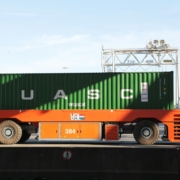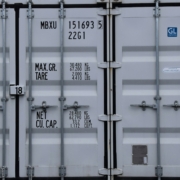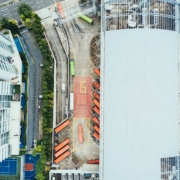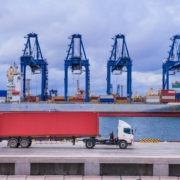Dehire Discipline: How to Stop Detention Fees Eating Your Margin
When you’re moving containers through the Port of Brisbane, timing is everything. One missed pickup, one slow handover in the yard, and suddenly you’re dealing with detention fees that chip away at your margin. Control over that last step, dehire, is how you protect the end of every job. But control is not about luck. It comes with planning that keeps up with the vessel, equipment that’s ready to go, and updates that warn you before something goes wrong.
Smooth dehire of container transport in Brisbane takes more than a good attitude. You need timing tools that work with real ship movement, yard crews who keep things flowing, and alerts that catch issues early. The aim is straightforward: get the container back within the return window, and your margin stays safe. Here’s how to steer clear of mad dashes and late fees.
Keep Eyes on the Clock: Slot Management That Works
Booking early gives you a chance, but it’s never enough if the vessel shifts its schedule. The Port of Brisbane sees delays most weeks, so your plan needs to move with it. Sites that use live updates from the wharf call the right shots under pressure. If your provider cannot shift as soon as container availability changes, you’ve already lost control.
Being set up close to the port is a real win. A port-precinct base means faster access and almost no risk of being stuck behind city traffic, which cuts down on missed slots. Aligning your dehire plan with a team that has its trucks nearby means more jobs hit the window on time, and you waste less time chasing last-minute schedule changes.
Visibility is the big lever. Companies running container transport in Brisbane with real-time slot and discharge info can swap jobs around as soon as the plan slips. If you’re still waiting for slow updates or having to call through too many layers, containers start to back up. Keep your eyes on current slot data, not old emails or yesterday’s plan.
Avoid the Yard Jam: Clear Container Turnaround Workflows
Once a container is picked up, the timing issues don’t stop. This middle leg is often where detention builds. Yard delays can break a dehire plan before you know it. Unloading plans need to be sorted before the container even lands. That’s simple handovers, prepared forklifts, clear lanes, no forklifts racing or drivers waiting while pallets get moved aside.
Good yards run on communication. If yard teams know what’s coming, they are ready with the right lifts and staging. Pre-loading meetings in the morning means nothing is a last-minute surprise. This stops trucks from stacking up and makes hitting tight turnaround times the norm, not the exception.
The busiest times, like after public holidays or when vessels have bunched together, need sharp planning. The best providers sequence their jobs the night before and adjust again when the port signals change. With job orders locked in, even weeks with heavy demand see containers cleared and trucks turned out faster.
DNV uses live yard coordination to keep the container stream flowing. Forklift drivers and container handlers get messaging from dispatch in real time, so no one is waiting for a phone call or searching for a supervisor when containers arrive. This kind of coordination slashes on-site waiting and keeps impossible windows from closing on you.
Down to the Wire: Use Live Tracking to Stay Ahead
It’s no good getting an update after the window has passed. Once the return time closes and your container is still on a truck, the cost is yours. That’s why live tracking of containers is more than a fancy extra. It lets ops teams act before anything really goes off the rails.
Seeing exactly where a truck is, right now, means you know if the run is on track or if a last-second change might help. If a job starts to run late, a dispatcher can swap it with another load that’s nearby. This way, no return gets missed, and your day doesn’t end with penalty paperwork.
Strong tracking does more than show blinking dots on a screen. The best setups use alerts to flag real risks before they get out of hand. If a load sits unmoved in the yard for too long, you know well before the problem comes back to bite. If the depot starts blocking returns for congestion, a quick ping alerts you to redirect straight away, avoiding another late return.
When your delivery partners own their fleet, updates are faster and more accurate. Information passes from the load to the office to the driver instantly. There’s no waiting on subcontractors or dealing with mixed systems. Everyone’s in the same loop and chasing the same windows.
Fleet, Location, Gear: The Real Advantage Behind Dehire Discipline
You get ahead in container transport in Brisbane when you remove all the usual gaps. If your logistics company owns their own trucks and trailers, holds all its own depot access, and is based next to the port, the difference shows up in your returned margins. No subcontractor delays, no passing the blame.
Owning the fleet keeps everything tighter. Trucks stay serviced, trailers are right for the cargo, and swaps take minutes, not hours. You don’t have to worry if someone borrowed the wrong trailer or if last-minute contractors understand the job. Everyone is on the same playbook.
Proximity to the Port of Brisbane means you react quicker to slot changes and depot updates. The yard is only minutes away, so travel time and risk stay low. This is backed up by having actual gear on hand for each job.
Skel trailers are standard for yard moves, Reach trailers tackle longer runs for flat sites, and side loaders can make tricky deliveries onto tight pads. Jobs with Out Of Gauge loads or over-size cargo are set up right from departure, not fixed half-way.
A key service DNV provides is direct access to the port for rapid container staging. All containers can be picked up, unpacked, fumigated, and returned on the same day if needed, thanks to this close facility link. This keeps day schedules tight and avoids any domino effect from dock delays.
Every part of this set-up aims to keep jobs from falling through the cracks. Drivers who know the area and site entry, equipment matched to load, and instant comms between dispatch, site, and truck together cut response lag to the bone.
The Cost of Delay: Why Margins Die Without Plan B
Greg has seen this play out. One missed dehire is an unhappy email chain. Two in a short run get you put on notice in those internal reviews. No one explains to the end client about port congestion, they see empty shelves or higher costs.
Damage goes way past losing money. Broken trust can kill a relationship for months or more. Service agreements look good on paper, but when a crate sits at the yard because no one made a backup plan, people remember. It ripples through operations, all from one late truck.
The only real fix is working with a team who have been through this before and stays in front of problems, not behind. They know the detours, the right depot contacts, and what to do when the usual plan breaks at five in the morning. Hoping for luck keeps you stuck, while working with sharp crews keeps your reports green.
Dehire is rarely the headline grabber. It’s the last part of the container transport in Brisbane before the next job. But this is where losses kick in if planning or comms break, and you can’t afford to drop it.
No Surprises, Just Control
Keeping on top of dehire is less about luck or finding extra speed on the day and more about habits that give you a buffer when schedules slip. You need updates that arrive while there’s still time to adjust, and a process that keeps everyone lined up, yard, driver, dispatch, port.
The best setups see detention as a rare headache, not an every-week fight. Get your control set up early, and you don’t have to scramble to return every box on time. Instead, you run the day as planned. No drama, no shock costs, just consistent work from start to finish. When your partner owns the job, owns the fleet, and stays close to the port, the whole operation feels easy, not stressful. That’s how you keep your margin in place and your day under control.
Keep your container operations seamless and your margins intact with reliable container transport in Brisbane. DNV Transport provides a strategic edge with our fast access to the Port of Brisbane and robust live tracking systems. Trust our expert team to keep your goods moving smoothly, without the stress of detention fees. Let’s ensure your next delivery is efficient and on schedule.











